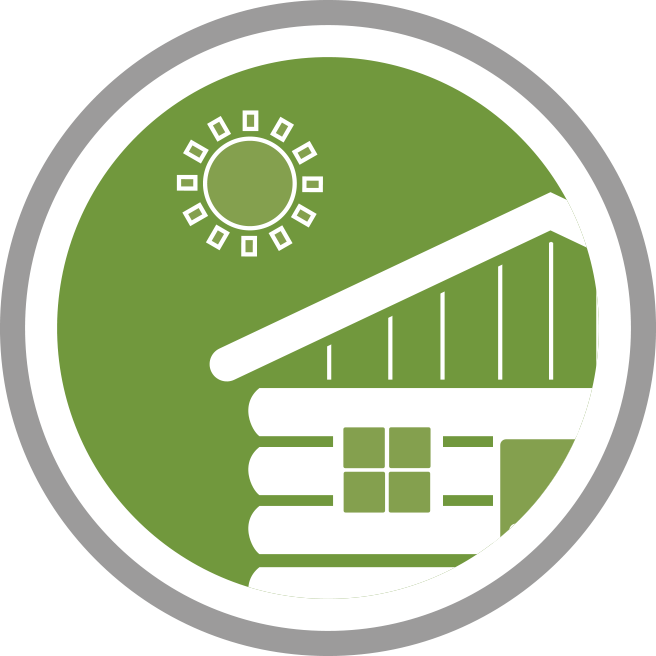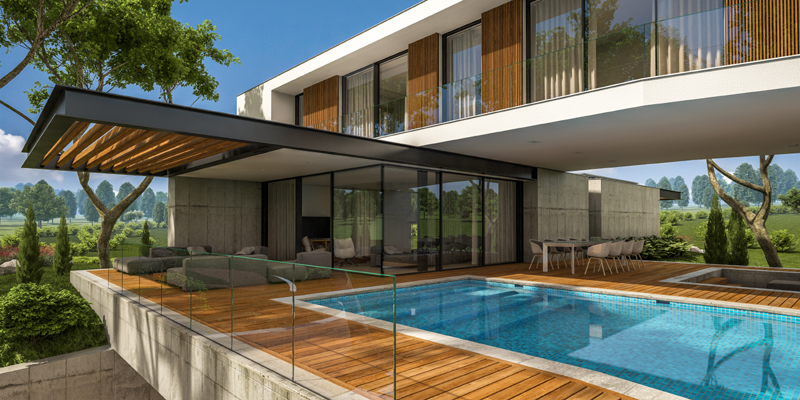

Esterni

Anche negli ambienti esterni Borma Wachs vuole garantire la necessaria protezione delle superfici in legno, con la stessa speciale attenzione per le materie prime naturali come gli oli e le cere.
Come impermeabilizzare il legno
Il degrado del legno all'esterno è sempre causato da 3 diversi fattori:
- azione del sole
- umidità causata dall'acqua
- attacco di piccoli insetti (tarli) che spesso sono presenti in forma larvale
Questo indebolisce i legami della lignina e favorisce il distacco di fibre di legno (danno estetico).
Per rendere il legno resistente ad ogni sostanza esterna senza infiltrazioni, è necessario l'uso di vernici impregnanti che lo proteggono.
Semplici da stendere (previo uso di carta vetrata per eliminare ogni traccia di vernice dal legno),
oltre a creare una pellicola protettiva, penetrano all'interno del legno colmando tutte le fessure e rendendolo impermeabile alla pioggia, al sole, salsedine, funghi ed anche agli insetti.
Possono essere utilizzati sia da interno che da esterno, senza alterarne la bellezza della struttura.
Il legno non trattato è soggetto a decomposizione, deformazioni o spaccature.
Per renderlo più durevole, è possibile trattarlo con un prodotto impermeabilizzante.
LA VERNICIATURA:
Vernici ad alto spessore sia in base acquosa che a base solvente, danno un ottimo aspetto estetico ma sono destinate inevitabilmente a "sfogliare".
Per mantenere il colore nel tempo è indispensabile avere impregnanti con pigmenti stabili alla luce e sostanze biocide per preservare e impermeabilizzare il legno.
Nelle finiture è indispensabile avere resine molto resistenti e filtri UV per la riduzione degli effetti
devastanti del sole. Avere un legno bello non significa averlo bello anche nel tempo!
DIFFERENZA TRA IMPREGNANTE E OLIO
Un impregnante per legno è un prodotto di finitura che consente di proteggere e di decorare i mobili da esterni e interni, a condizione che siano in posizione verticale. Grazie alla sua formula filmogena, l’impregnante viene assorbito dal legno fino in profondità per offrirgli una protezione ottimale e a lunga durata contro le intemperie (pioggia, gelo, raggi UV, temperature estreme, ecc.).
Gli impregnanti consentono anche di decorare i legni esterni con una palette di colori traslucidi, lasciando trasparire la venatura naturale del legno.
Gli impregnanti si applicano su qualsiasi essenza di legno: resinoso, frondoso, esotico.
Superfici in legno nuove o grezze : è possibile applicare direttamente il prodotto (ad eccezione dei legni esotici che devono essere sgrassati preventivamente).
Superfici in legno ingrigite o annerite: l’ideale è utilizzare uno schiarente per pulirle e quindi sgranare il materiale prima di impregnarle.
Legno già impregnato: è sufficiente una leggera levigatura (carta abrasiva grana 120) prima dell’applicazione.
Legno smaltato, verniciato: rimessa a nuovo del legno tramite levigatura.
Un olio è una finitura che impregna la superficie del legno offrendogli sia una protezione nutriente impedendo che il legno secchi. Protegge gli elementi in legno orizzontali dalle aggressioni climatiche (raggi UV, umidità, intemperie, ...).
Resistente all’acqua, l’olio è perfetto per i bordi piscina.
Di facile manutenzione e applicazione, non si scaglia col tempo nonostante intemperie e calpestii ripetuti.
L’olio è ideale per conservare e abbellire l’aspetto originale della superficie nel corso del tempo.
L’olio si applica su tutte le essenze del legno (legno europei, legni esotici o legni autoclavati):
Superfici in legno nuove: non occorrono preparazioni preventive. I legni esotici devono essere leggermente sgrassati prima del loro trattamento.
Rivestimenti in legno grezzi e/o ingrigiti: dovranno essere staccati e puliti con uno schiarente.
Legno con vecchie finiture (smalto, impregnante, vernice, ecc.): rimettere a nudo il legno con un impregnante e levigarlo successivamente.
- Per i legni verticali: un impregnante
- Per i legni orizzontali: un olio
Colore e finitura degli impregnanti
Gli Impregnanti si differenziano dalle vernici e dagli smalti perché non creano un film sulla superficie ma penetrano in profondità.
Non coprono le naturali venature, bensì le esaltano.
Sono quindi la soluzione ideale se desideri mantenere l’aspetto originario o ravvivare la tinta del legno.
Contattaci per ricevere maggiori informazioni sui nostri prodotti.
Riceverete gratuitamente il nostro catalogo prodotti (in formato PDF)

LEGENDA
Conformità EN 71.3 Sicurezza dei giocattoli - Parte 3: Migrazione di determinati articoli.
I laboratori danesi di Eurofins hanno riconosciuto la conformità degli oli Borma Wachs alla normativa EN 71-III relativa alla migrazione di metalli pesanti nocivi per la salute, garantendo la sicurezza di trattamenti a tal punto da consentirne l'eventuale utilizzo per finitura o manutenzione di giocattoli per bambini.


Etichettatura dei prodotti da costruzione
L'etichetta copre la normativa francese relativa alle emissioni di composti organici volatili (COV) e l'impatto che hanno sulla qualità dell'aria interna dopo che il prodotto è stato portato nella stanza.
L'etichettatura si riferisce agli inquinanti emessi una volta che i prodotti sono stesi e asciugati.
L'Istituto di Bioedilizia IBR aveva testato alcuni nostri prodotti e ha stabilito che corrispondono agli standard più alti della normativa francese COV.
EMICODE EC1 – Materiali da costruzione a basse emissioni
Materiali da posa, adesivi e prodotti da costruzione certificati
Il marchio EMICODE garantisce che il materiale è stato testato e certificato in base al suo livello di emissioni. Rispetto al 1997 i materiali da costruzione a basse emissioni hanno oggi un valore di TVOC (quantità totale di composti organici volatili) da cento a mille volte inferiore. Il marchio EMICODE non viene rilasciato se si sospetta che un materiale da costruzione alteri il patrimonio genetico, provochi il cancro o comprometta la capacità riproduttiva.
APEO (alchilfenoli etossilati)
Gli APEO (alchilfenoli etossilati) sono sostanze chimiche altamente persistenti, che si depositano nei tessuti penetrando, attraverso essi, nella catena alimentare.
Recenti studi ne dimostrano la tossicità e la pericolosità, in quanto potenziali distruttori endocrini.
HACCP
La conformità all'HACCP, acronimo di Hazard Analysis and Critical Control Points, significa aderire a un sistema di gestione della sicurezza alimentare che mira a identificare, valutare e controllare i pericoli che possono compromettere la salubrità degli alimenti. In pratica, si tratta di adottare misure preventive per garantire che gli alimenti siano sicuri per il consumo.
